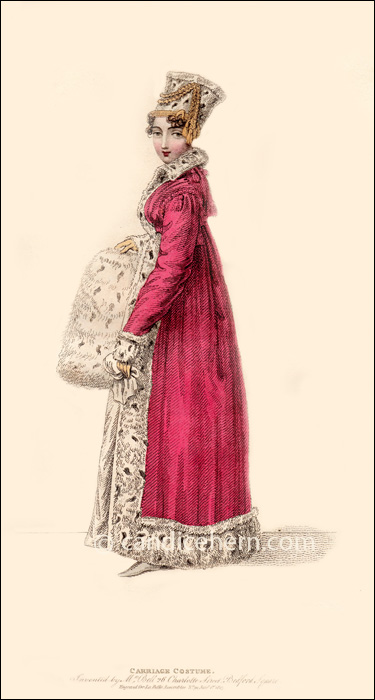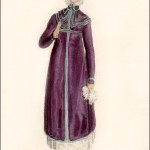Journal des Dames et des Modes, Paris, January 5, 1816.
“Chapeau de Velours. Carrick et Guêtras de Drap.”
The coat is called a carrick, which was an outer coat with 3-5 short capes attached at the collar and falling over the shoulders. The name derived from the English garrick, or coachman’s coat, which was a greatcoat with many capes. Initially a man’s garment, the French eagerly adapted it for women during the Empire period, especially for driving or traveling.
This carrick is made of light tan-colored wool with a standing collar, which appears to be embroidered with a simple geometric design. The capes would have been attached to the front of the collar with buttons. The coat would have had a fashionably high waist, with the attached capes falling just below the waistline. The extra-long sleeves, with the cuffs falling over the knuckles, was also a masculine style.
Beneath this very masculine garment is a very feminine lace collar, around which the model is tying a pink and white striped scarf. Her black bonnet, made of velvet, is also trimmed with lace and ribbons.
In one more homage to gentleman’s wear, our lady wears spats (guêtras) over her black shoes, made of the same wool as the coat.
This print was designed by the famous artist Horace Vernet, and engraved by Pierre Baquoy.








